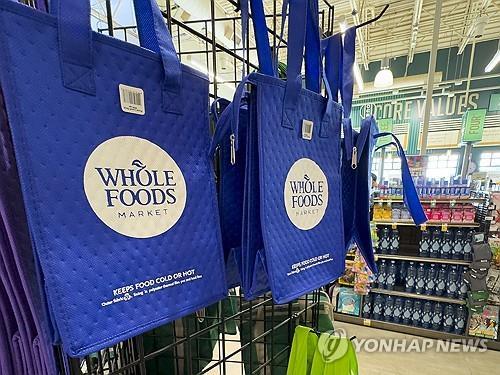
(New York=Yonhap Infomax) Jeong Ho Jin – US retail sales posted a modest increase in September, falling short of market expectations and signaling a slowdown in consumer sentiment compared to August's growth rate.
According to the US Department of Commerce on the 25th (local time), seasonally adjusted retail sales in September totaled $733.3 billion, up 0.2% from the previous month. On a year-on-year basis, sales rose 4.3%.
The market consensus compiled by Yonhap Infomax (screen number 8808) was for a 0.4% increase, meaning the September figure underperformed expectations.
The month-on-month growth rate for September was notably slower than August's 0.6% rise, further highlighting weakening consumer sentiment. For the three months from July to September, cumulative sales increased 4.5% year-on-year.
Focusing solely on the retail sector, sales edged up 0.1% from the previous month and climbed 3.9% year-on-year.
Non-store retail sales (including e-commerce) grew 6.0% year-on-year, while food services and drinking places sales rose 6.7% over the same period.
Among the most closely watched components in the retail sales report is food services and drinking places. Historically, consumers tend to dine out more when they feel confident about the economy, jobs, and income.
The 6.7% increase in dining out over the past year—nearly double the inflation rate—suggests households have not yet felt significant economic anxiety.
Excluding motor vehicles and parts, retail sales rose 4.1% year-on-year; excluding gasoline stations, sales increased 4.4%.
Gasoline station sales were up 3.1% year-on-year.
By category, compared to the same period last year, sales at health and personal care stores rose 5.6%, apparel and accessories climbed 6.7%, and food services and drinking places also increased 6.7%.
Core retail sales (the control group), which exclude the volatile categories of autos, gasoline, building materials, and food services, fell 0.1% month-on-month, missing the market forecast of a 0.3% increase.
The control group is a key indicator used in calculating gross domestic product (GDP) and is useful for tracking underlying consumption trends.
Ali Jaffery, economist at CIBC Economics, said, "Several years of elevated spending, concerns about the labor market, and tariffs may be factors causing consumers to slow their pace of spending."
jhjin@yna.co.kr
(End)
Copyright © Yonhap Infomax Unauthorized reproduction and redistribution prohibited.

